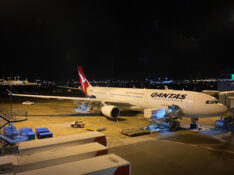How Airports Make Money

Airports are a vital component of the aviation industry. Without them, we wouldn’t be able to fly and airlines wouldn’t exist. But what is the airport business model?
The revenue model for airlines is fairly obvious. They make money by selling tickets, charging for ancillaries like seat selection and baggage, and selling cargo space. Many legacy airlines also make significant profits from their loyalty programs and other associated businesses.
The revenue sources of airports are less obvious. So in this article, we look at the ways in which airports make money…
The main sources of airport revenue
The largest source of income for large airports is passenger & security fees, which are included in the cost of every plane ticket. This makes up almost a third of an average airport’s revenue. This is followed by landing fees, comprising 12% of revenue, and income from airport retail stores.

If you’ve had to park your car at an airport recently, you may be forgiven for thinking that a huge proportion of the airport’s income comes from parking fees. On average, it’s around 9%.
Of course, these are just averages. Different airports may make their money in different ways, and smaller airports obviously bring in much less income than larger ones – particularly in non-aeronautical charges due to the lower passenger volumes.
Types of airport charges
According to Anne Graham’s book Managing Airports: An International Perspective, airport revenue can be split into two broad categories: Aeronautical and non-aeronautical charges.
Aeronautical charges
In an average year (not affected by COVID), aeronautical revenue makes up a bit over half of a typical airport’s income. Aeronautical charges are those directly related to the operation of aircraft, and include things like:
- Aircraft landing & parking fees
- Passenger movement & security charges
- Airline terminal lease fees
- Air traffic control fees
- Ground handling fees (if the airport operator provides this service)
Airports typically charge landing fees to airlines based on the weight or size of the aircraft.
Landing fees obviously don’t apply to departing aircraft – instead, airports charge a per-passenger movement charge that applies to departing passengers and is incorporated in the cost of each ticket. The fee may be lower for transiting passengers, compared to those starting their journey at that airport, and airlines may get a discount if they use a remote stand. Departing passengers also pay a security fee as part of the ticket price, which is intended to cover the cost of security screening.

Airports don’t usually charge aircraft parking fees for the first 1-4 hours that a plane is on the ground. But if a plane remains on the ground for longer than a standard turnaround time, the airport will usually charge for this either based on the aircraft weight, the amount of space used or as a proportion of the landing fee. This fee may be cheaper if the aircraft parks at a remote bay rather than taking up valuable gate space.
Non-aeronautical charges
Non-aeronautical charges are commercial revenue not directly related to aviation. For example, they could include things like:
- A share of revenue from airport retail stores, food outlets and lounges
- Car parking fees
- Advertising
- Car hire
- Rent
- Utility recharges
- Airport development levies
When you buy something at an airport retail store, such as a restaurant or duty-free store, the airport will generally take a cut from each sale. They may also take a cut when you enter an airport lounge, for example, even if you didn’t directly pay for entry and a transaction has only taken place behind the scenes. This is on top of revenue from rent charged to the shop or lounge operator.
Car parking fees are self-explanatory, and airports offer advertising spaces everywhere from billboards outside the airport, to the airbridges, and even in the toilets. There are also various other minor sources of revenue, which could include things like consulting fees.
Airports may waive fees to attract airlines
Slot-restricted airports like Heathrow, that are operating at full capacity, are typically quite profitable as they can get away with charging higher aeronautical fees. The high volume of affluent passengers that pass through these airports, spending money in the process, also helps.
But smaller, under-utilised airports may use incentives to try to attract more airlines. For example, they may waive or lower their landing fees for a certain amount of time, or provide free advertising to airlines, in exchange for that airline providing service to that airport. This may work out better overall for the airport because the airport facilities – a fixed cost – may not have otherwise been used if the airline didn’t fly there. In addition, by serving that airport, the airline will bring in passengers that generate non-aeronautical revenue.
Low-cost airlines like Ryanair and Bonza often fly to smaller regional airports in exchange for these kinds of incentives. It’s a win-win as the airport should still make more revenue overall.

Many regional airports run at a loss
Major airports like Sydney Airport tend to make quite large profits for their shareholders – many of which are super funds. But airports are expensive to operate and not all of them make enough revenue to cover their costs.
Many of the costs involved in running an airport are fixed. Smaller regional airports that lack scale often operate at a loss.
While many larger airports in Australia have been privatised, many regional airports in Australia are owned and operated by local councils as a loss leader. The council funds this because the economic and social value of having air service to their town outweighs the loss incurred in running the airport. In some cases, governments also offer additional incentives to airlines to encourage them to serve their local community.



Community Comments
Loading new replies...
Join the full discussion at the Australian Frequent Flyer →